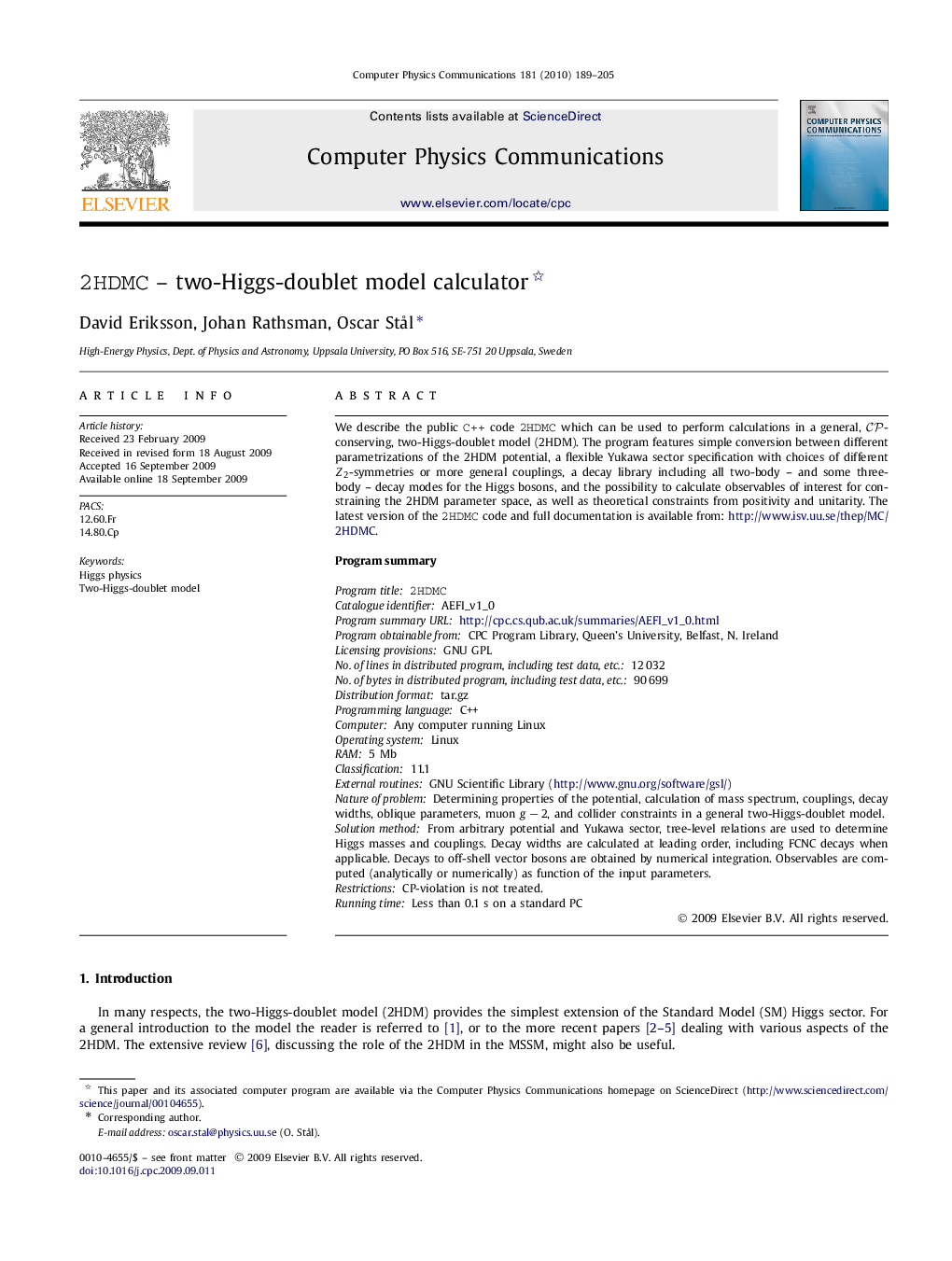| کد مقاله | کد نشریه | سال انتشار | مقاله انگلیسی | نسخه تمام متن |
|---|---|---|---|---|
| 503264 | 863754 | 2010 | 17 صفحه PDF | دانلود رایگان |

We describe the public C++ code 2HDMC which can be used to perform calculations in a general, CPCP-conserving, two-Higgs-doublet model (2HDM). The program features simple conversion between different parametrizations of the 2HDM potential, a flexible Yukawa sector specification with choices of different Z2Z2-symmetries or more general couplings, a decay library including all two-body – and some three-body – decay modes for the Higgs bosons, and the possibility to calculate observables of interest for constraining the 2HDM parameter space, as well as theoretical constraints from positivity and unitarity. The latest version of the 2HDMC code and full documentation is available from: http://www.isv.uu.se/thep/MC/2HDMC.Program summaryProgram title:2HDMCCatalogue identifier: AEFI_v1_0Program summary URL:http://cpc.cs.qub.ac.uk/summaries/AEFI_v1_0.htmlProgram obtainable from: CPC Program Library, Queen's University, Belfast, N. IrelandLicensing provisions: GNU GPLNo. of lines in distributed program, including test data, etc.: 12 032No. of bytes in distributed program, including test data, etc.: 90 699Distribution format: tar.gzProgramming language: C++Computer: Any computer running LinuxOperating system: LinuxRAM: 5 MbClassification: 11.1External routines: GNU Scientific Library (http://www.gnu.org/software/gsl/)Nature of problem: Determining properties of the potential, calculation of mass spectrum, couplings, decay widths, oblique parameters, muon g−2g−2, and collider constraints in a general two-Higgs-doublet model.Solution method: From arbitrary potential and Yukawa sector, tree-level relations are used to determine Higgs masses and couplings. Decay widths are calculated at leading order, including FCNC decays when applicable. Decays to off-shell vector bosons are obtained by numerical integration. Observables are computed (analytically or numerically) as function of the input parameters.Restrictions: CP-violation is not treated.Running time: Less than 0.1 s on a standard PC
Journal: Computer Physics Communications - Volume 181, Issue 1, January 2010, Pages 189–205